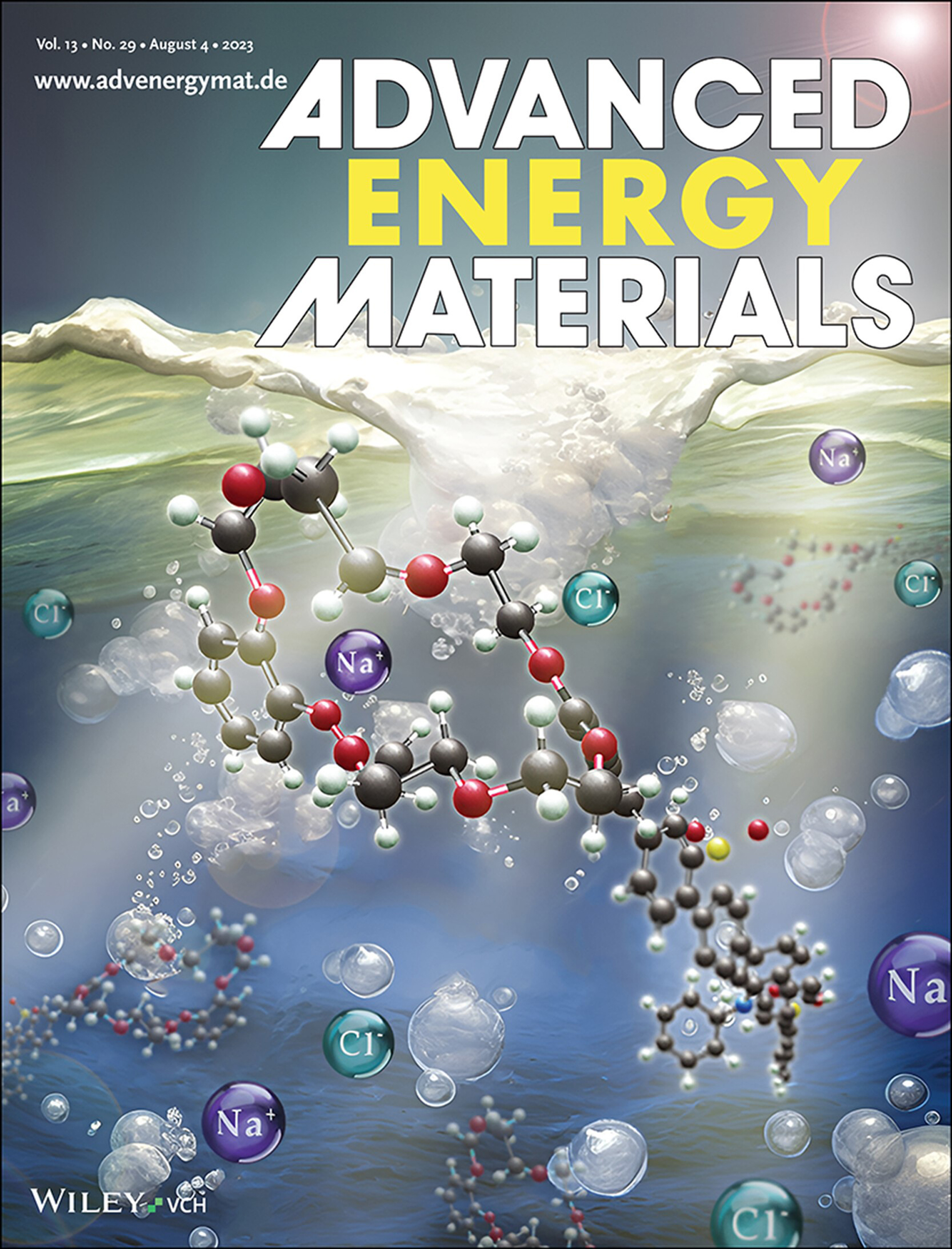Revolutionizing Hydrogen Production from Seawater: NTHU's Breakthrough with Crown Ether
2023.10.31
In a revolutionary advance in clean energy technology, a research team led by Professor Ho-Hsiu Chou (周鶴修) from the Department of Chemical Engineering at National Tsing Hua University (NTHU) in Taiwan, has achieved a breakthrough in seawater hydrogen production. The team's innovative use of Crown Ether (CE) to capture sodium ions in seawater has significantly improved both the rate and yield of hydrogen production, marking a significant advancement in the quest for green hydrogen.
This groundbreaking research has gained international recognition, with the work featured as the cover article in the prestigious energy journal Advanced Energy Materials.
The use of photocatalysts for hydrogen production has faced a significant obstacle – the accumulation of sodium salts from seawater on the surface of the photocatalyst, which hinders the efficiency of hydrogen production. To address this, Professor Chou's team has pioneered a novel technology that incorporates CE into the structure of polymer photocatalysts. This groundbreaking approach effectively prevents salt-induced aggregation, enabling the electrons generated during photocatalysis to seamlessly combine with hydrogen ions, resulting in efficient hydrogen gas production.
Initially, the research team used long-chain ether compounds to capture sodium ions. However, they soon discovered that the ring-shaped CE structure offered superior ion-capturing capabilities. One of the team members, Tse-Fu Huang (黃則傅), a Ph.D. candidate in the Department of Chemical Engineering, likened this improvement to a strategic game of "tag," where encircling the target proved more effective.
Once the interference of salt was eliminated, the team observed a remarkable increase in the hydrogen production rate. The output rose from 15.5 millimoles of hydrogen per gram of catalyst per hour to 39.2 millimoles, exceeding the initial yield by more than 2.5 times.
Professor Chou emphasized the fact that 97% of the world's water resources are comprised of seawater, offering a virtually unlimited resource. The seawater used in their experiments was sourced from Nanliao Fishing Harbor in Hsinchu, Taiwan. As this technology continues to mature, there is the potential to locally harness seawater and sunlight to produce hydrogen in coastal areas, paving the way for zero carbon emissions. This promising development holds great potential for advancing clean energy and sustainable development.
The research team, led by Professor Ho-Hsiu Chou (周鶴修), includes the doctoral students Tse-Fu Huang (黃則傅), Wei-Cheng Lin (林韋澄), Bing-Heng Li (黎秉衡), and the master's students Yu-En Sun (孫語恩) and Ying-Rang Zhuang (莊英讓), all from the Department of Chemical Engineering at NTHU.
 Prof. Ho-Hsiu Chou (周鶴修) (right) and doctoral student Tse-Fu Huang (黃則傅) of NTHU's Department of Chemical Engineering use Crown Ether to capture sodium ions in seawater.
Prof. Ho-Hsiu Chou (周鶴修) (right) and doctoral student Tse-Fu Huang (黃則傅) of NTHU's Department of Chemical Engineering use Crown Ether to capture sodium ions in seawater.

Prof. Ho-Hsiu Chou (周鶴修) (left) and doctoral student Tse-Fu Huang (黃則傅) from NTHU's Department of Chemical Engineering employ Crown Ether to significantly boost seawater hydrogen production efficiency.

Prof. Ho-Hsiu Chou (周鶴修) from NTHU's Department of Chemical Engineering achieves a breakthrough in seawater hydrogen production.

NTHU's seawater hydrogen production research team, led by Prof. Ho-Hsiu Chou (周鶴修) from the Department of Chemical Engineering, includes students Tse-Fu Huang (黃則傅), Ying-Rang Zhuan (莊英讓) (back row, right), Bing-Heng Li (黎秉衡), Wei-Cheng Lin (林韋澄), and Yu-En Sun (孫語恩).

Prof. Ho-Hsiu Chou (周鶴修) from NTHU's Department of Chemical Engineering made a significant breakthrough in seawater hydrogen production technology.

The hydrogen production flask held by Prof. Ho-Hsiu Chou (周鶴修) from NTHU's Department of Chemical Engineering symbolizes the promise of clean energy.

Exposure of the team's high-molecular-weight catalyst to seawater and sunlight results in the production of hydrogen gas bubbles.

Tse-Fu Huang (黃則傅), a Ph.D. candidate in NTHU's Department of Chemical Engineering, preparing to synthesize the high-molecular-weight catalyst.

The introduction of Crown Ether led to a 2.5-fold improvement in seawater hydrogen production efficiency, as analyzed by the research team.

Powdered polymer photocatalysts infused with Crown Ether.

NTHU's seawater hydrogen production research findings are featured on the cover of the renowned journal Advanced Energy Materials.






